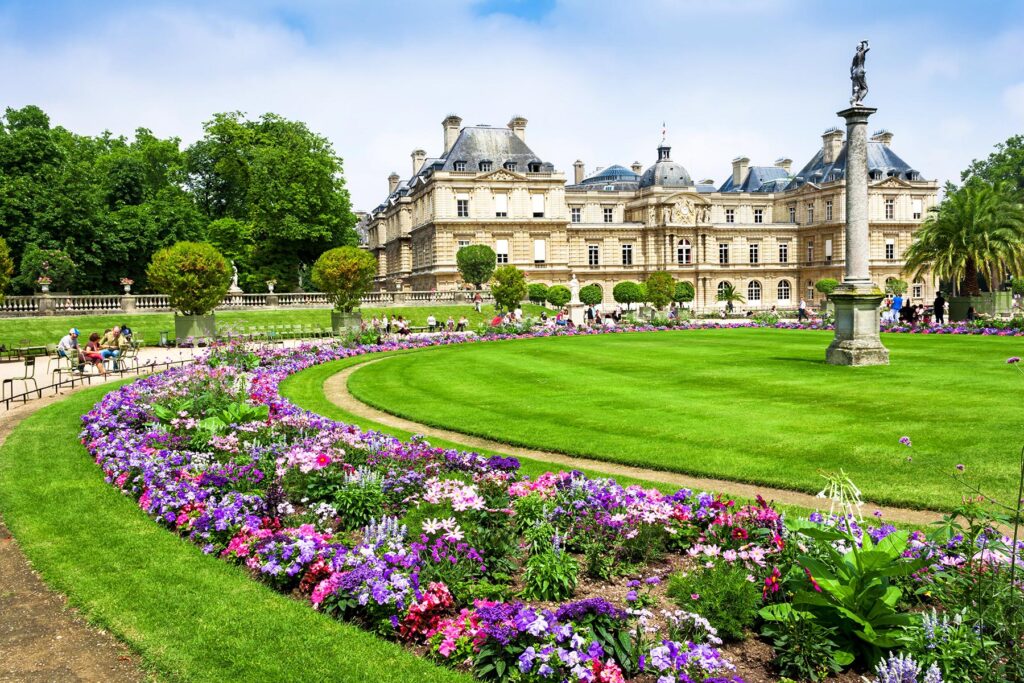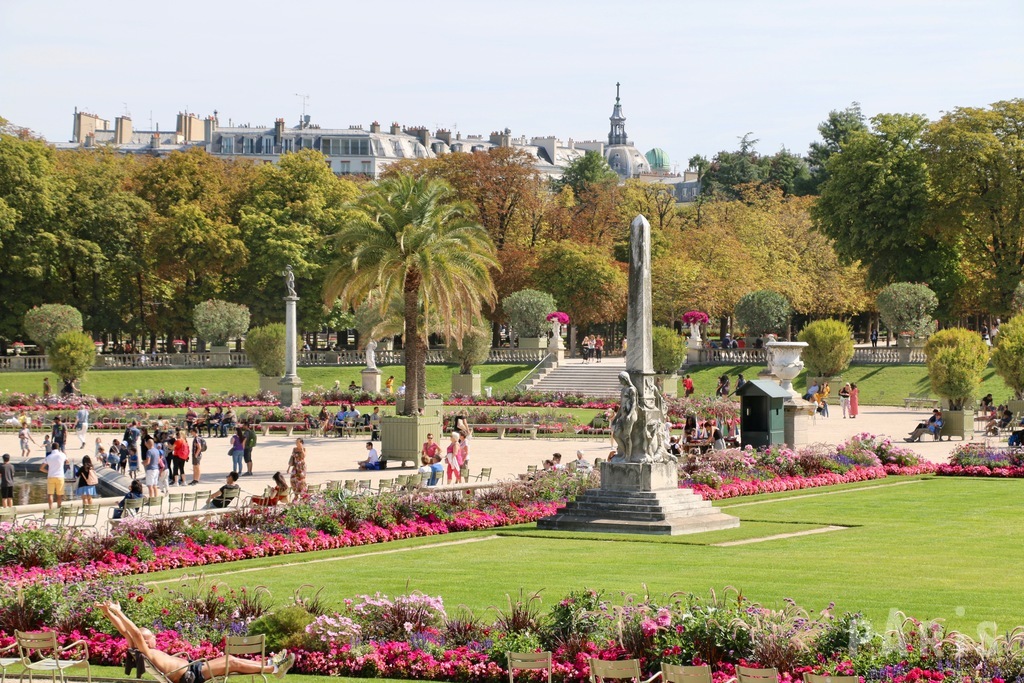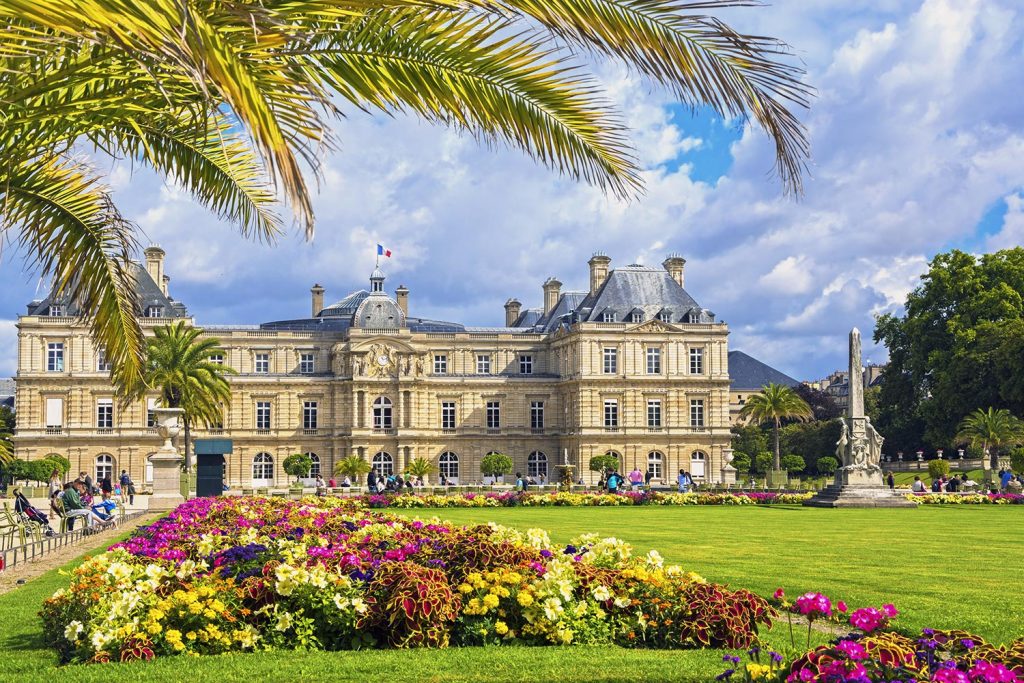The history of the Luxembourg Gardens, a true green oasis in the heart of Paris, is much more than just that of a simple park. It is a place rich in history, a living testament to the social, cultural, and political transformations of the French capital. From its creation in the early 17th century to its current role as a beloved relaxation spot for Parisians and tourists alike, the Luxembourg Gardens have withstood the test of time, maintaining their charm and significance.
Origins and Creation of the Luxembourg Gardens
The origins of the Luxembourg Gardens date back to the early 17th century, initiated by Marie de Medici, widow of King Henry IV and mother of Louis XIII. Yearning to recreate the Florentine ambiance of her childhood, she decided to build a new palace, the Luxembourg Palace, surrounded by a splendid garden. Architect Salomon de Brosse was tasked with designing the palace, while the gardens drew inspiration from Italian garden styles, featuring symmetrical flowerbeds, fountains, and tree-lined pathways.

The creation of the Luxembourg Gardens was heavily influenced by the Boboli Gardens in Florence, which were dear to Marie de Medici. The initial layout included elements typical of the Italian Renaissance, with a strong presence of sculptures and basins. The garden initially covered about 8 hectares, providing a space for relaxation and promenades for the queen and her court.
Evolution Over Time
The Luxembourg Gardens have undergone numerous transformations over the centuries. During the reign of Louis XIII, the garden was expanded and enhanced with new plantings and pathways. Louis XIV continued these embellishments, enlisting renowned gardeners to perfect the flowerbeds and groves.
In the 18th century, under Louis XV and Louis XVI, the garden continued to expand and diversify. François de Piney, then Superintendent of Finances, contributed to the modernization of the green spaces by introducing new plant species and more complex landscaping.
The French Revolution was a period of upheaval for the Luxembourg Gardens. The royal family’s properties were confiscated, and the garden became a gathering place for revolutionaries. Despite the turmoil, the garden remained a cherished public space, serving as a setting for political and social meetings.
The Luxembourg Gardens During the French Revolution
During the French Revolution, the Luxembourg Gardens played a central role as a gathering place and a venue for political expression. It became a stage for history, hosting speeches, demonstrations, and public debates. Significant events unfolded here, reflecting the tensions and hopes of this tumultuous period.
The Luxembourg Palace was transformed into a prison for political figures, and the garden became a meeting place for Parisian citizens. Despite the violence and uncertainty of the time, the Luxembourg Gardens remained a space of life and resistance, where the ideals of liberty and fraternity continued to be expressed.
The Gardens in the 19th Century
The 19th century brought significant changes to the Luxembourg Gardens, especially under the reign of Napoleon III and the influence of Baron Haussmann. The gardens were redesigned to accommodate the needs of a growing urban population and to integrate with the new urban plans for Paris.
Napoleon I ordered the construction of an orangery and the addition of new fountains, while Baron Haussmann oversaw the expansion of the garden and the creation of new green spaces. The boulevard Saint-Michel and rue de Médicis were laid out, defining the current boundaries of the garden. The paths were widened, the flowerbeds redesigned, and new statues were added to adorn the garden.
The Luxembourg Gardens became a public and cultural space, hosting concerts, exhibitions, and sporting events. It established itself as a place of relaxation and leisure for Parisians, while also maintaining its role as a prestigious setting for official events.
The Luxembourg Gardens Today
Today, the Luxembourg Gardens are one of the iconic sites of Paris. Spanning 25 hectares of green space, they offer a haven of peace in the heart of the city. Visitors can admire the Luxembourg Palace, home to the French Senate, as well as the numerous statues and fountains adorning the gardens.


The Luxembourg Gardens are a popular spot for relaxation and leisure. Parisians and tourists alike come to stroll, jog, play chess, or simply enjoy the lush surroundings. The central basin, where children sail small boats, is a favorite meeting place, along with the tennis courts and playgrounds.
The gardens continue to host cultural events, concerts, and exhibitions, maintaining their tradition as a place of gathering and exchange. Their proximity to cultural institutions such as Boulevard Saint-Michel and the Luxembourg Museum further enhances their appeal.
For our guests at Hotel Trianon Rive Gauche, the Luxembourg Gardens are just a two-minute walk away, offering a peaceful and historic escape right next to your stay.
Discover the Luxembourg Gardens just steps from our hotel
Take advantage of the exceptional proximity of Hotel Trianon Rive Gauche to the Luxembourg Gardens, just a 2-minute walk away. This iconic garden offers a haven of tranquility and beauty in the heart of Paris, perfect for a relaxing stroll or a refreshing break after a day of exploring the capital.
The Luxembourg Gardens are much more than just a green space. They are a living testament to the history of Paris, having evolved through the centuries while retaining their charm and significance. From their creation by Marie de Médicis to their current role as a place of relaxation and culture, the Luxembourg Gardens embody the soul of Paris. Visitors to the gardens can not only enjoy their beauty and serenity but also delve into the fascinating history of the French capital. With their rich heritage and contemporary vitality, the Luxembourg Gardens remain a must-visit destination for anyone wishing to experience the essence of Paris.



